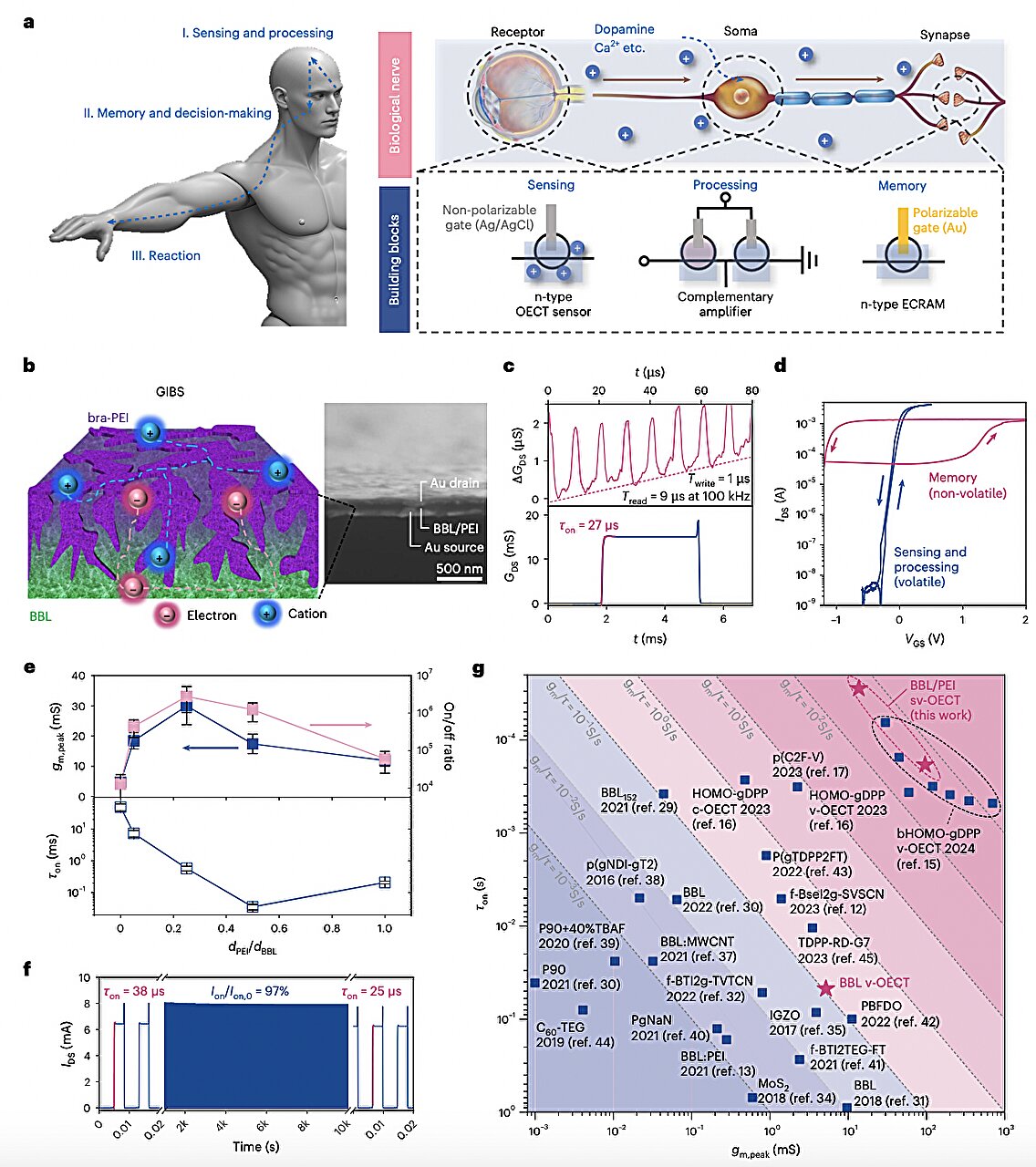With the rapid development of technology, many engineers are working on the development of hardware devices that can mimic the functions of biological systems, such as synapses, human skin and nerves. Among them, the research and development of artificial nerves has attracted much attention, which aims to mimic the role of nerves in humans and other animals, and has great application potential in many fields such as damaged nerve repair, brain-computer interfaces, high-precision sensors, and other advanced electronic products. However, it is difficult to design a system that can operate at biocompatible frequencies and realistically mimic neural function.
Recently, researchers at Xi'an Jiaotong University in China and the Technical University of Munich in Germany made an important breakthrough. They have developed a new high-frequency artificial nerve with a unique design that optimizes the transmission of ions and electrons, responds to signals extremely quickly, and stores charge-related information. The results of the study, published in the journal Nature Electronics, are neural-inspired systems based on uniformly integrated organic electrochemical transistors.
Research team members Wang Shijie and Wang Yichang mentioned in the paper, "N-type organic electrochemical transistors are expected to become the basic components of artificial nerves because of their enhanced behavior triggered by positive potentials, which is very similar to the characteristics of biological cells." However, these devices have the problem of weak ion and electron transport and storage performance, which leads to their poor performance in terms of volatility and non-volatility, especially the slow response speed. For this purpose, we have developed high-frequency artificial nerves based on uniformly integrated organic electrochemical transistors. ”

Figure:base on n type sv-OECT artificial nerve. image:Nature Electronics (2025)
The artificial nerve created by the research team is made by depositing vertical N-type organic electrochemical transistors on a substrate in sequence. These devices are able to mimic the functions of receptors, synapses, and neuronal cell bodies in the human nervous system, ultimately forming nerve-like circuits. "We have fabricated a vertical N-type organic electrochemical transistor with a gradient hybrid bicontinuum structure that enhances both ion and electron transport, as well as ion storage," the researchers said. The transistor has a volatile response time of only 27 microseconds, a non-volatile memory frequency of up to 100 kilohertz, and a long state hold time.”
Artificial nerves of the past have performed well in some areas, such as ion and electron transmission, long-term memory storage, etc., but have not worked as well as they should have done in others. In contrast, the organic transistor-based system created by the researchers has performed well in terms of ion and electron transport and long-term ion storage, breaking through the limitations of the past.
"Our integrated artificial nerves, including vertical N-type and P-type organic electrochemical transistors, enable sensing, processing, and storage functions in the high-frequency domain," the researchers said. Moreover, we found that this artificial nerve can be implanted into an animal model of impaired neurological function and can also mimic basic conditioned reflex behavior.”
To test the potential of artificial nerves, the researchers implanted them into mice with impaired nerve function. The initial results are encouraging, as the system is not only compatible with the biological tissues of mice, but also effectively mimics conditioned reflexes supported by nerves.
In the future, this promising artificial nerve will be further optimized and tested in more experiments to evaluate its safety and performance. Eventually, it could be used to develop technologies to repair neural circuits and advance the field of brain-computer interfaces, such as prosthetic limbs that can be controlled by the brain, devices that help paralyzed patients communicate with people easily, and systems that can precisely monitor or regulate brain activity.






